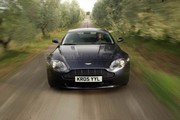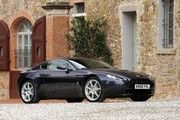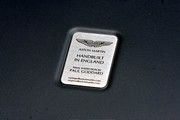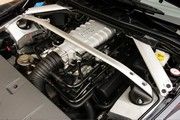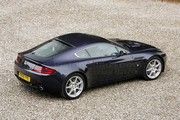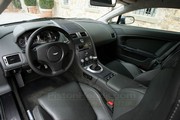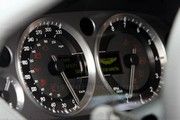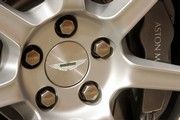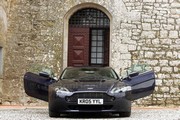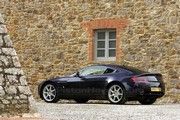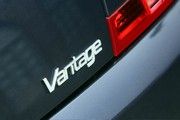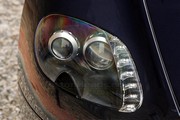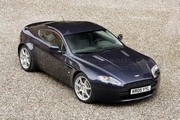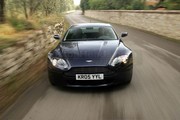Aston Martin V8 Vantage
Ian Kuah samples the best Aston ever
Italians love cars, especially sportscars. We were left in no doubt of that as we burbled through the villages of Tuscany with locals of all ages often pausing to smile and wave in celebration of our passage. We could see the words 'Bella machina' being mouthed by more than one local.
Today we are driving the V8 Vantage, the baby Aston Martin that will plunge the British firm into a head-on conflict with Porsche, and first impressions are very favourable indeed.
While turbocharged and supercharged engines may deliver heroic levels of torque, if you are a purist who values crisp throttle response, there is no simply no substitute for a sharp, normally-aspirated motor like the all-new 4.3 litre Aston Martin V8. Delivering its 380bhp at 7,000rpm with 410Nm (302 lb ft) of torque at 5,000rpm, it rockets the 1,570kg V8 Vantage to 100km/h in just 5.0 sec (0-60mph in 4.8 sec) and on to a top speed of 280km/h (175mph).
Delivery
Although peak torque is developed quite high up in the rev range, the linear torque characteristics of the new motor endow it with good flexibility on the road. To prove the point, we dropped the car into sixth gear at low speed and let the revs fall to 1,200rpm. The variable inlet camshaft timing and fully mapped ignition and fuelling really makes a difference here, and as we fed throttle in progressively, the small block V8 began to build thrust smoothly. By 1,500rpm, it was becoming noticeably strong. Once past 2,000rpm, power and torque really began to soar and we were cooking with gas again.
Mid-range is lusty, so when you are overtaking, you do not have to tap into the upper reaches of the intermediate gears unless you really want to. If you do, the motor is quite happy to sing to peak power at 7,000rpm and beyond. Thanks to the relatively light single-mass flywheel, the motor also answers a blip on the throttle at idle with alacrity and revs eagerly.
Soundtrack is always an issue with enthusiasts' cars and for those who have got used to the magnificent V12 motor in recent Astons, the new small V8 will be a culture shock. Unlike the old Virage, the V8 Vantage does not shake the ground when it starts up. Its soundtrack is altogether more polite and less old school thunder, but is inspiring nonetheless.
On the Move
Accelerate away and the sound builds to a note more akin to a combination of distant rumble and ripping silk rather than deep NASCAR rumble. That said there is no mistaking the underlying harmonics of a bent-crank V8. We decided to call it 'V8 lite' but it gives the small Aston a distinct aural signature of its own that will never be mistaken for that of any other V8 powered car.
Balance is a strong suit of the V8 Vantage. The all-new alloy V8 motor is positioned very far back in the chassis resulting in a front-mid-engined car.
With its gearbox disposed in a transaxle layout akin to that of the Ferrari Daytona and Porsche 928, the small Aston achieves a static weight distribution of 49/51 percent empty. With a full tank of fuel, the weight bias shifts rearwards slightly, which helps traction, as does the standard limited slip differential.
One aspect of 'balance' in a chassis is the turn-in rate of the front-end in relation to the rear. If everything is in harmony, the car will feel all-of-a-piece when you move off centre. This inherent balance translates into fantastic poise on the open road. Under all circumstances, the V8 Vantage feels taut and nuggety and all of a piece, like a racing bulldog if you must, but totally different in character and effect from its two bigger brothers.
Soaking it up
The test route in the Tuscany hills included some very badly maintained roads that really tested the V8's suspension travel. This first ever hatchback Aston Martin turns into a bend eagerly whether it is a cursory turn of the steering at normal road speeds or a committed move towards the apex under trail braking when you are really pushing on. The limited slip differential helps to keep breakaway progressive when you eventually broach the limits of mechanical grip, something hard to achieve on a dry road unless you are really trying.
The 8.5J and 9.5J x 18-inch 10-spoke alloys are shod with 235/45ZR18 and 275/40ZR18 Bridgestone Potenzas. Our test cars had the optional seven-spoke 8.5J and 9.5J x 19-inch alloys with 235/40ZR19 and 275/35ZR19 rubber and the resulting ride is firm, well damped but never jiggly. Let's face it, no sportscar with low profile tyres is going to ride like a limousine and the Aston does a fair job of keeping your spine from being shortened on a bumpy road while maintaining iron-fisted control of the wheels and tyres.
The pedals are perfectly positioned for heel and toe operation and while the gearshift is not the slickest in town, it has a lovely mechanical feel to it with a shift rate that suits the action of the other controls.
Slowing
The brakes are an interesting lesson in the chassis engineers constant trade-off between pedal feel and stopping power. With 355mm grooved, vented discs in front and 330mm vented discs at the rear, each clamped by a four-pot calliper, brake pedal effort is higher than most people are used to. However, this also means that when an experienced driver uses the brakes in anger, the progression on tap is far greater than the vast majority of servo-assisted systems, and the perceived threshold at which the ABS eventually kicks in is that much higher.
The only downside is that actual pedal feel is not world class, but in practice that is more of a subjective rather than an objective problem. Too many of today's cars are over servoed, and that can be just as frightening for a driver as the pedal being like a block of wood. Aston has set up the V8's brakes to feel more like a non-assisted system with a twin master cylinder.
In a sense, the same can be said for the steering. Not the most informative in terms of describing the road surface, it is nonetheless nicely weighted and linear in its action. In the real world, we value that linearity and perfectly matched turn-in rate over the sharper steering with twitchy chassis responses of a car like the Ferrari 360 Modena.
A driver's car
We were very impressed with the Aston Martin V8 Vantage as a driver's car. Its performance is good, character is abundant, and it has balance, finesse and even handed strengths. It also has a class and breeding that sets it apart from its similarly priced German rivals.
That this is a really good car that needs no excuses is the over-riding consideration for us. The V8 Vantage is the real deal, a world-class sports car, and also undoubtedly the best car Aston Martin has ever made.
Gassing Station | Aston Martin | Top of Page | What's New | My Stuff

